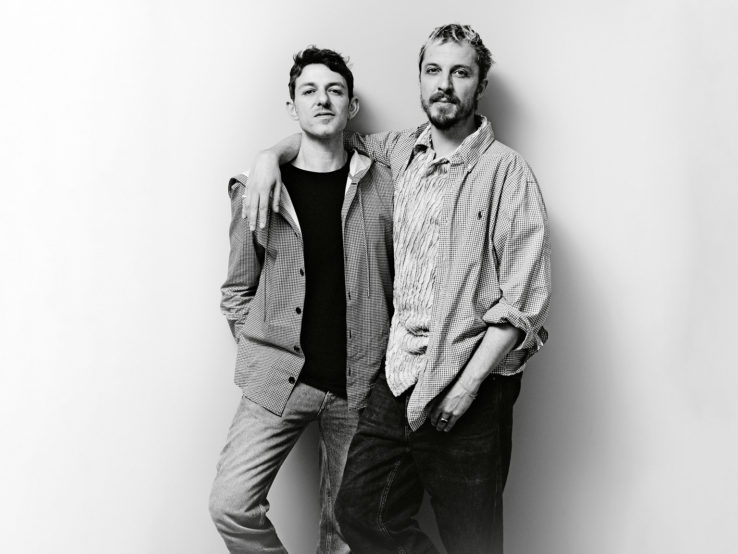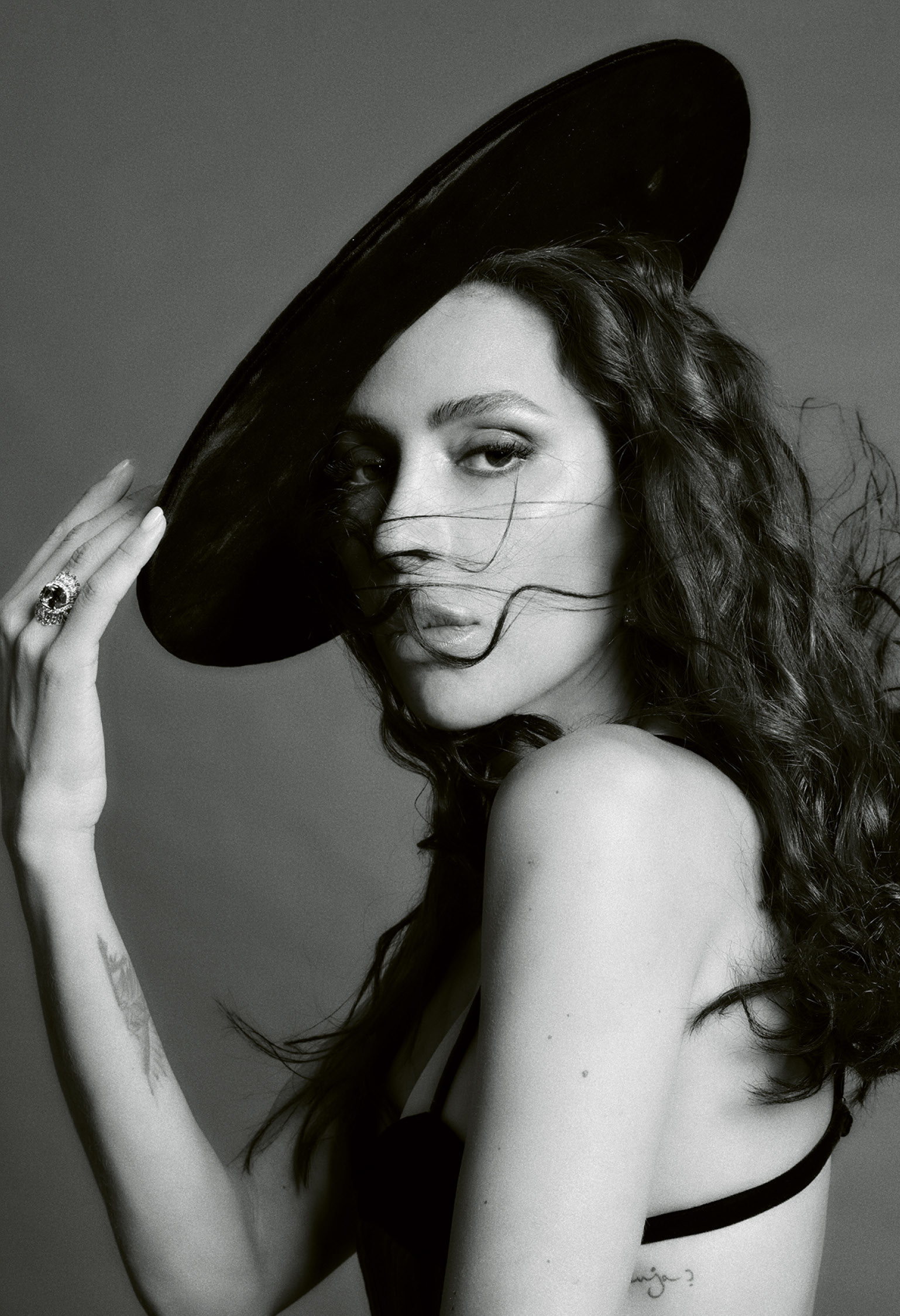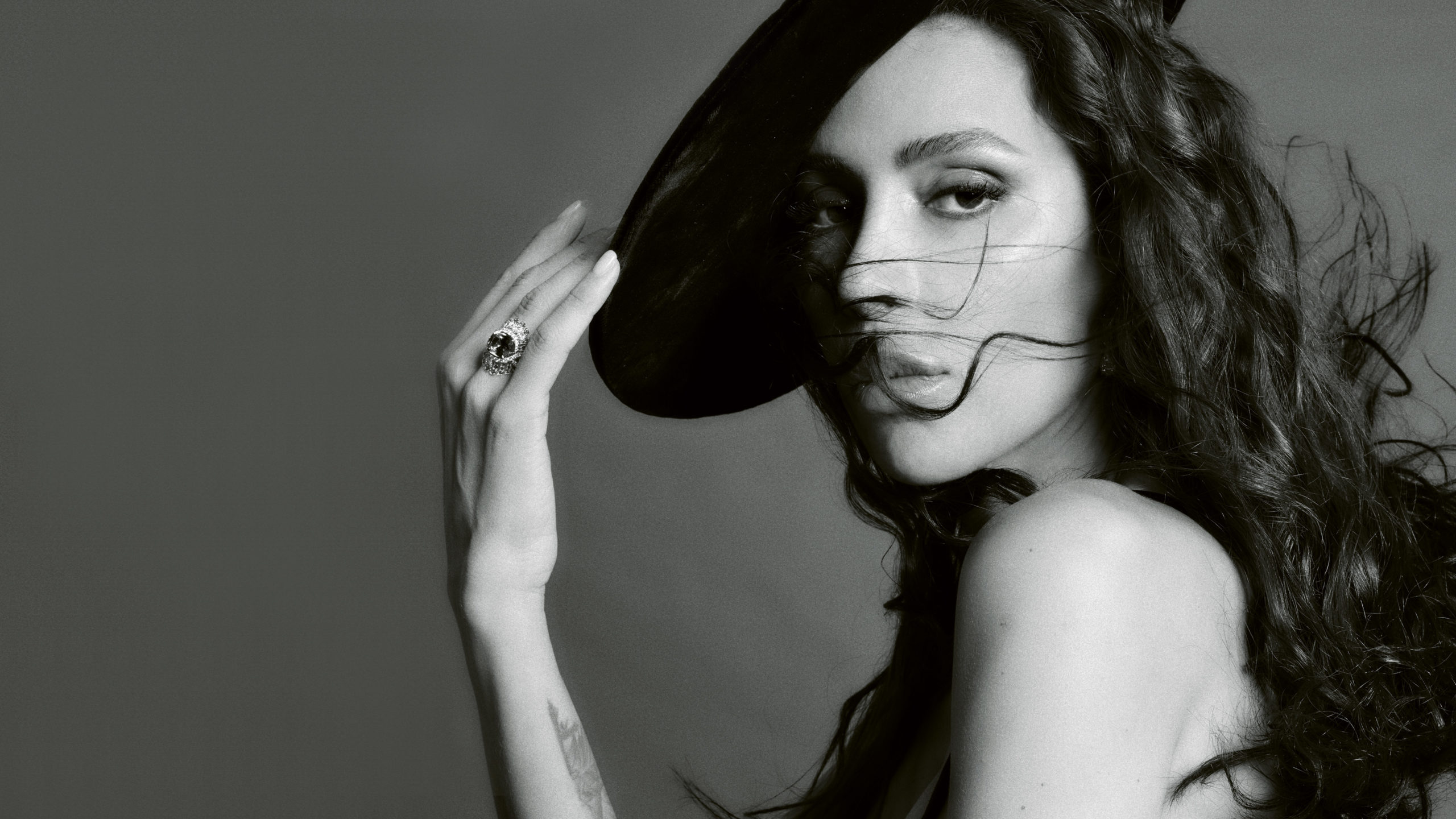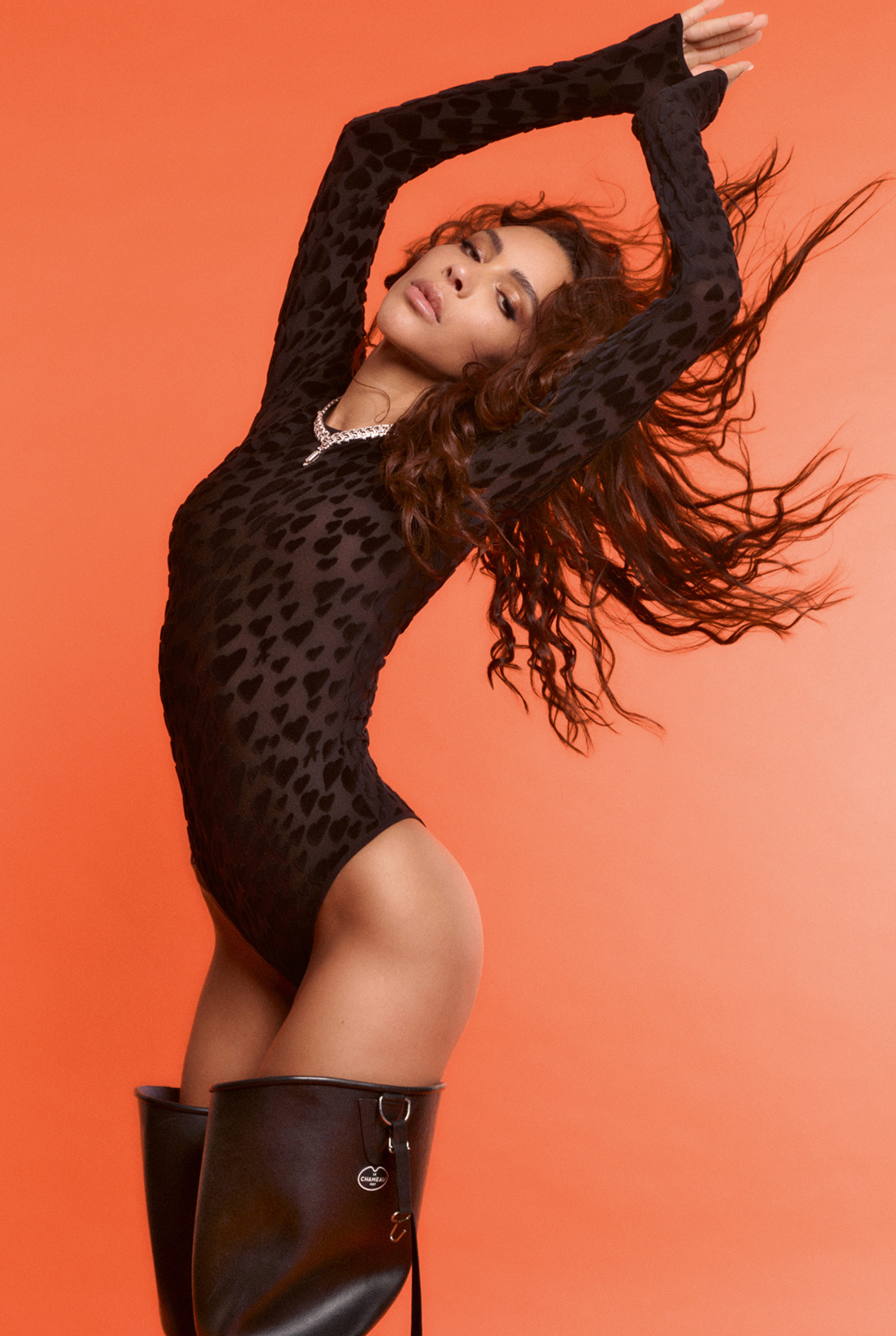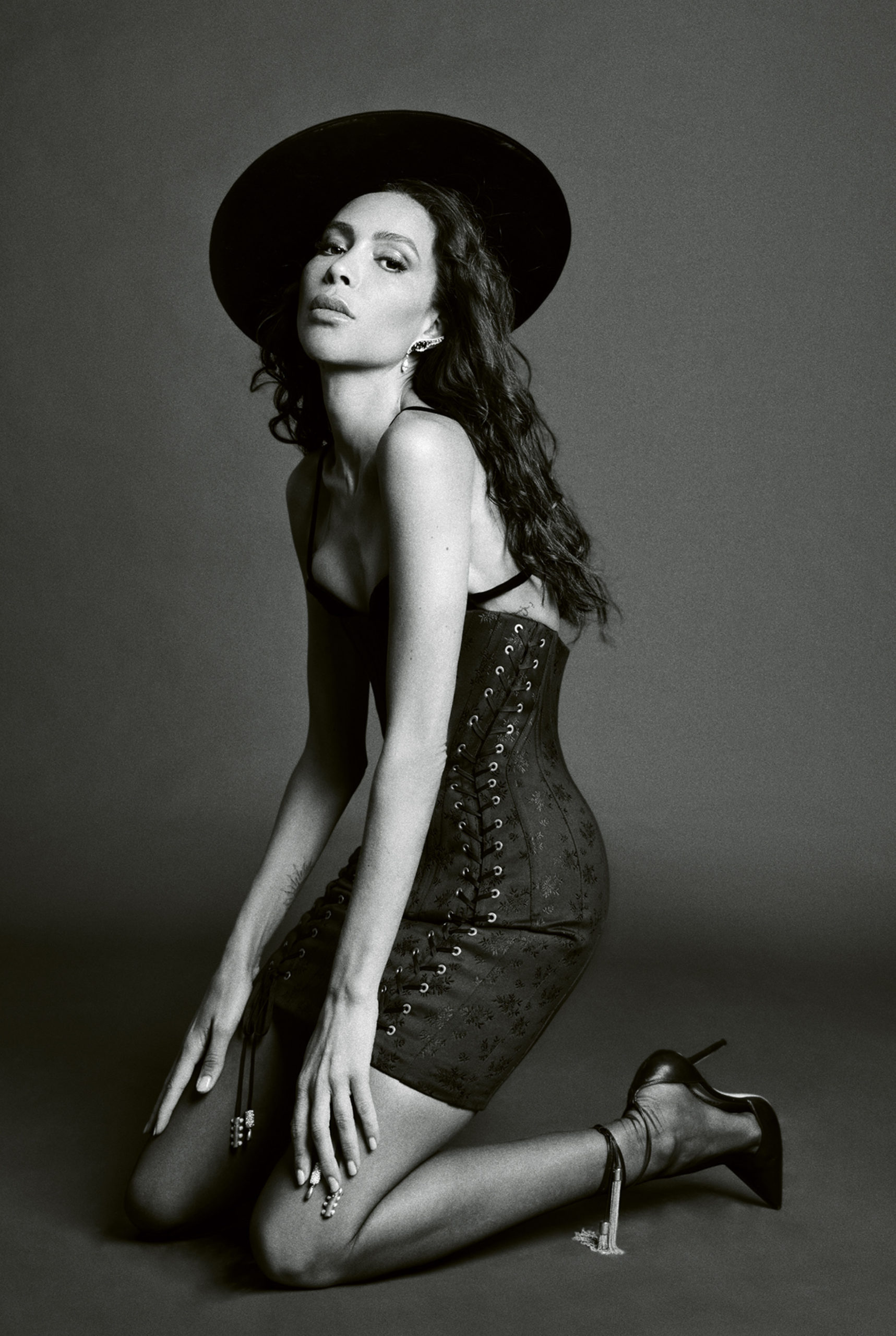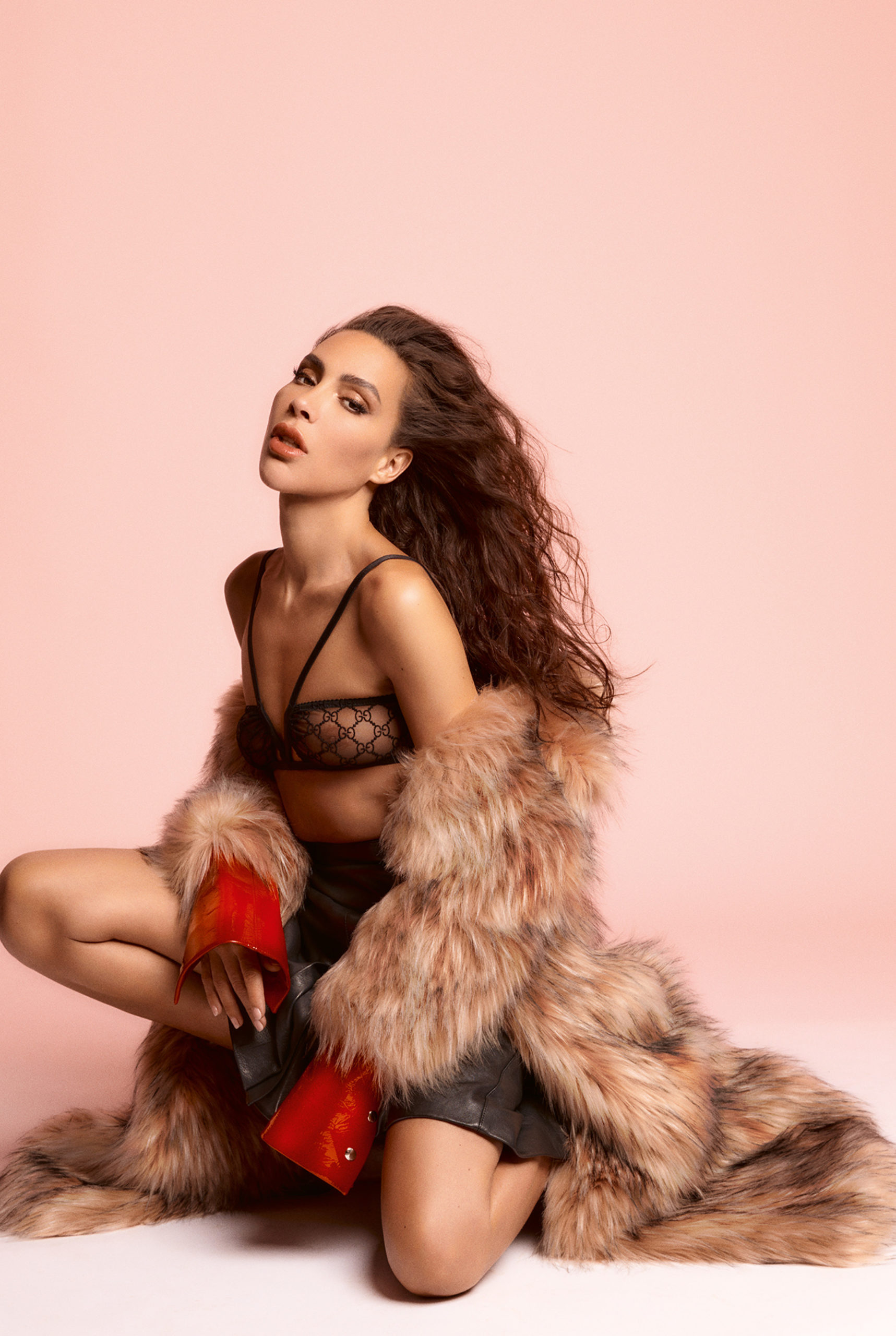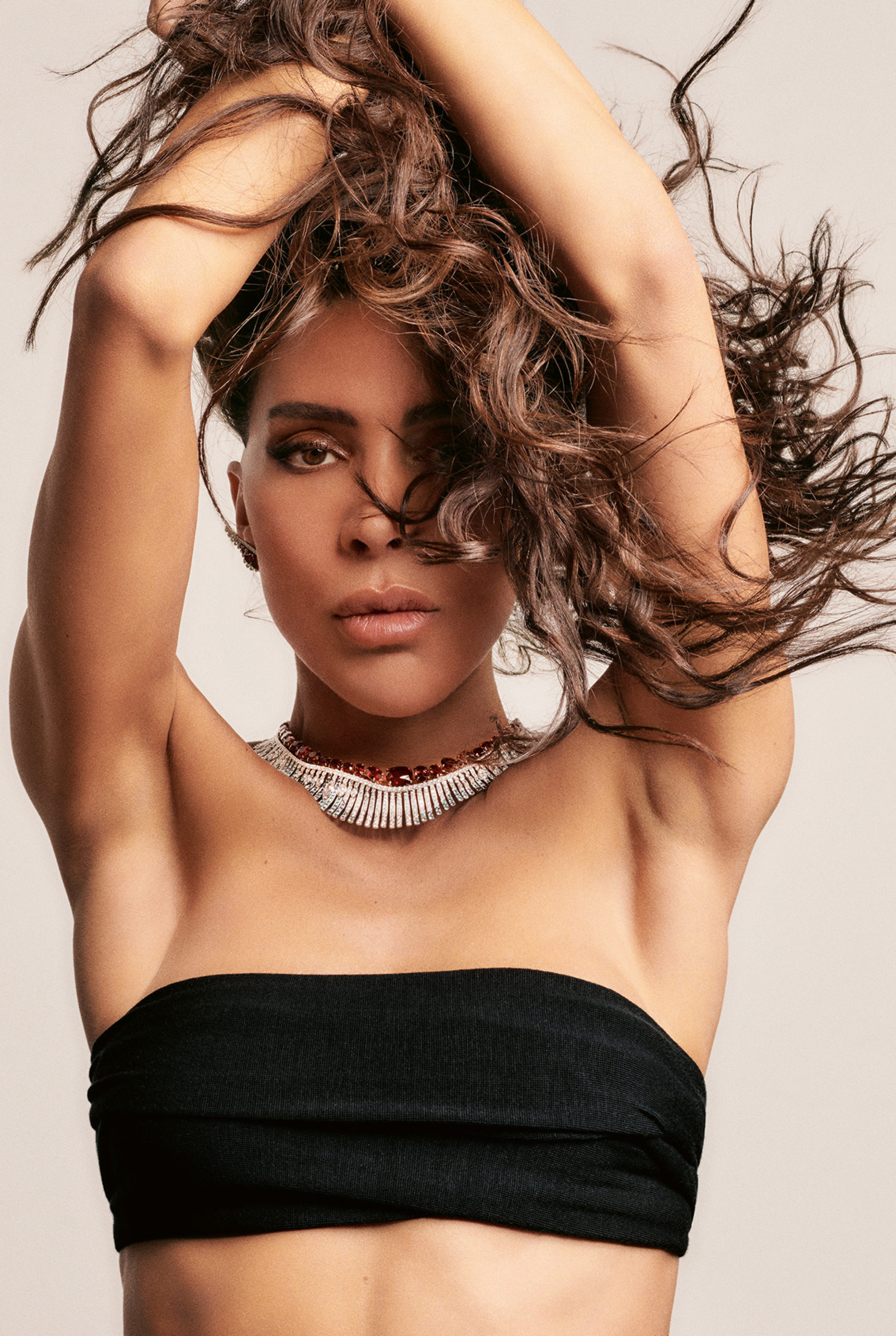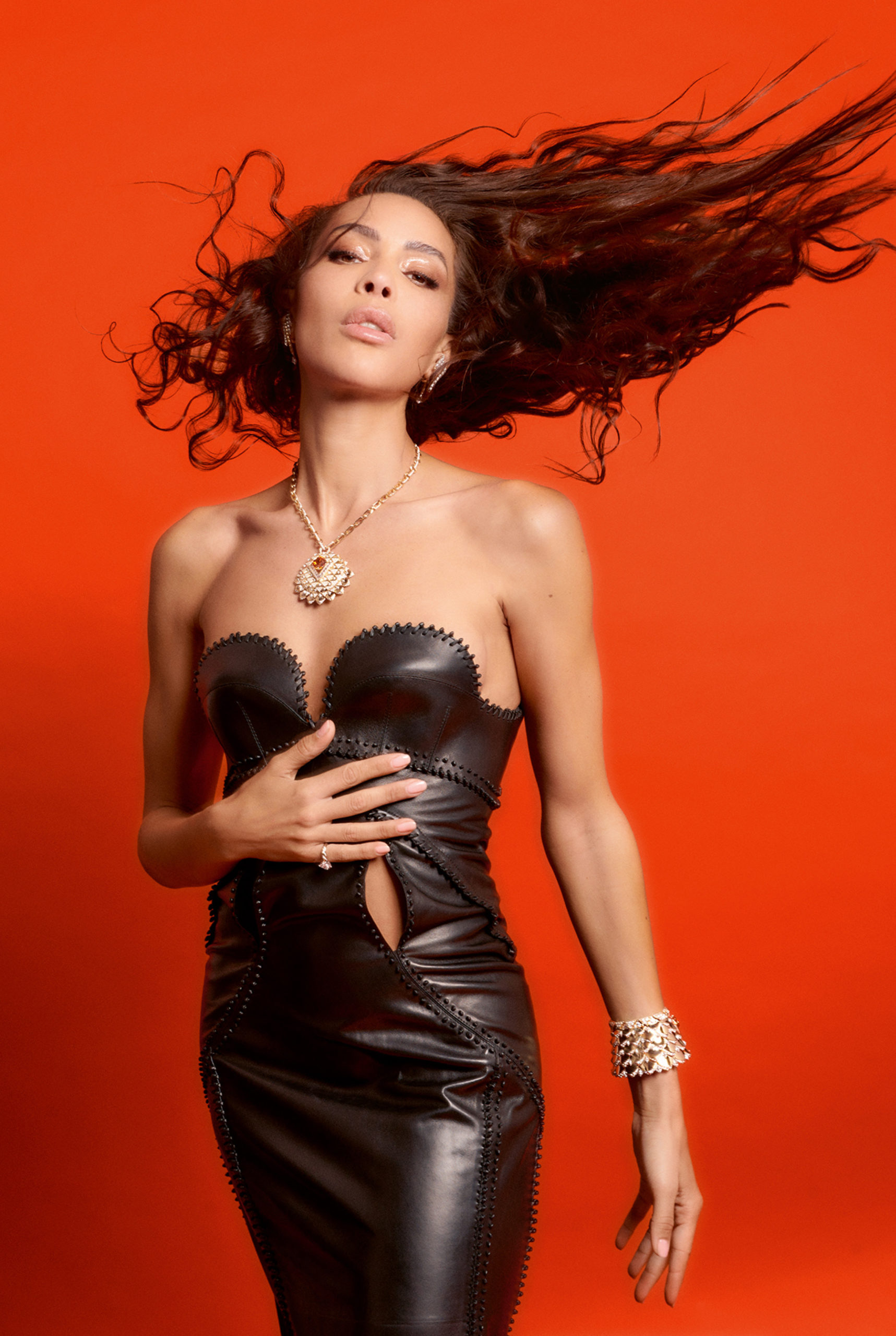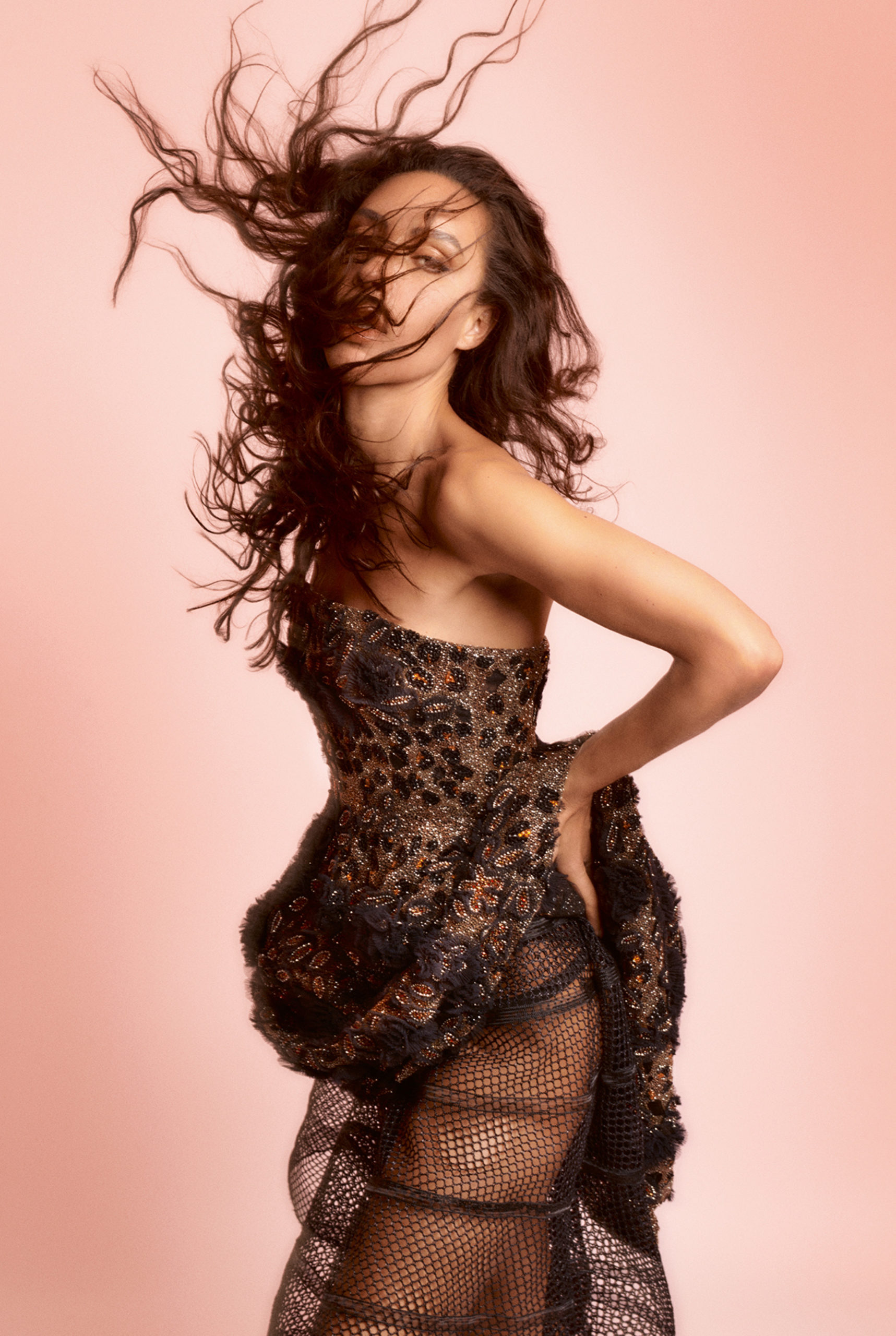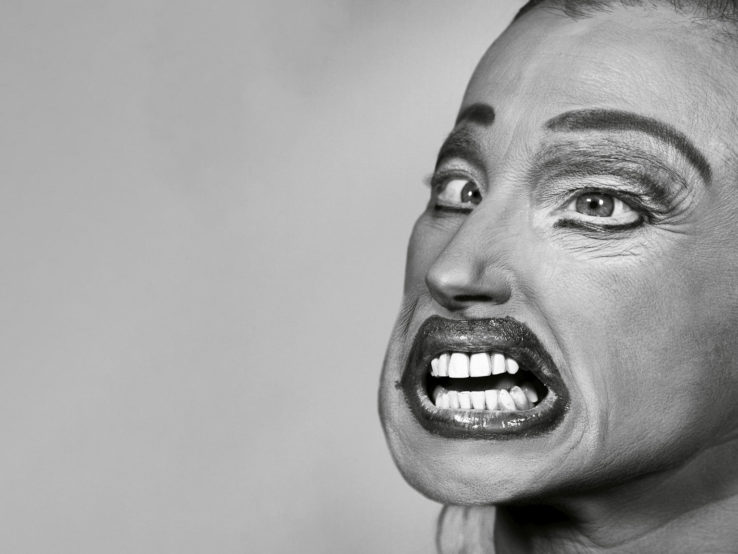After exchanging our respective @’s and from this moment on, Inès and I began to converse more and more regularly, gradually finding common ground in terms of culture, fashion, but also in terms of values to defend, messages to convey and battles to wage. So much so that one day, with the outspokenness and touching audacity that we know her for, Inès slipped into my Insta DMs and told me, thanks to a voice note (her favourite communication tool), that she wanted to be shot and interviewed in the next issue of Mixte. « Shooting, interview + cover, of course, right baby? We’re going to break the internet! It’s going to be fun! » she said in a tone of voice that was both playful and equally enterprising. In my head, it just clicked and I’m thinking: « Why not?” After a short moment of reflection, Inès’ proposal, besides being timely, makes terrible sense in my mind,: For some time now, we have been debating at the editorial conference whether or not to put celebrities back on the cover of the magazine, after years of limiting our covers exclusively to photos taken from our major fashion series. This suggestion by Inès is therefore an opportunity for us to take action and to start something ambitious. Given her background, who better than Inès to bring to life the notion of empowerment, a theme developed and dissected in the pages of this Fall-Winter 2022-2023 issue?
When I asked her what this meant to her, Inès replied without pretence or detours. « It’s not a very sophisticated or original answer, but for me, empowerment is first of all linked to the idea of power, as its etymological root indicates, quite simply. It’s the power that we all have within us and that can be nurtured, maintained and finally used as a tool to accept ourselves, to rise, to grow stronger and/or to assert ourselves. It’s all very simple, but that’s what it is. And it applies to all areas and to all people. For example, when we talk specifically about female empowerment or woman empowerment, we’re talking about the idea of breaking free from a masculine straitjacket, but also reclaiming one’s power and might as a woman in a macho and patriarchal society. » Score! The empowerment process can indeed take various forms and be applied to different categories of people and environments, and Inès is living proof of this, as her personal history and identity are at the intersection of various types of injustice and discrimination. Yes, because in addition to being a woman, she is also a trans woman, of Arab origin to boot, forcing Inès to fight against the sexist, transphobic and/or racist attacks she was subjected to, while trying to overcome the obstacles that are unfortunately still present in our society, whether they are psychological, physical, sexual or socio-cultural. This very hectic life made her aware quite early on of the need to maintain values of solidarity and to defend as much as possible the concept of convergence of social struggles, while at the same time understanding and deconstructing the systems of dominance and hierarchisation of different population groups. No wonder she was seen at the anti-racist and anti-police violence march « Truth and Justice for Adama », organised on 13 June 2020 on the Place de la République in Paris where Inès proudly brandished a « Black Trans Lives Matter » sign, chanting the slogan several times to the crowd through her megaphone, all with the energy and infectious joy of a teenage groupie facing her idol.
